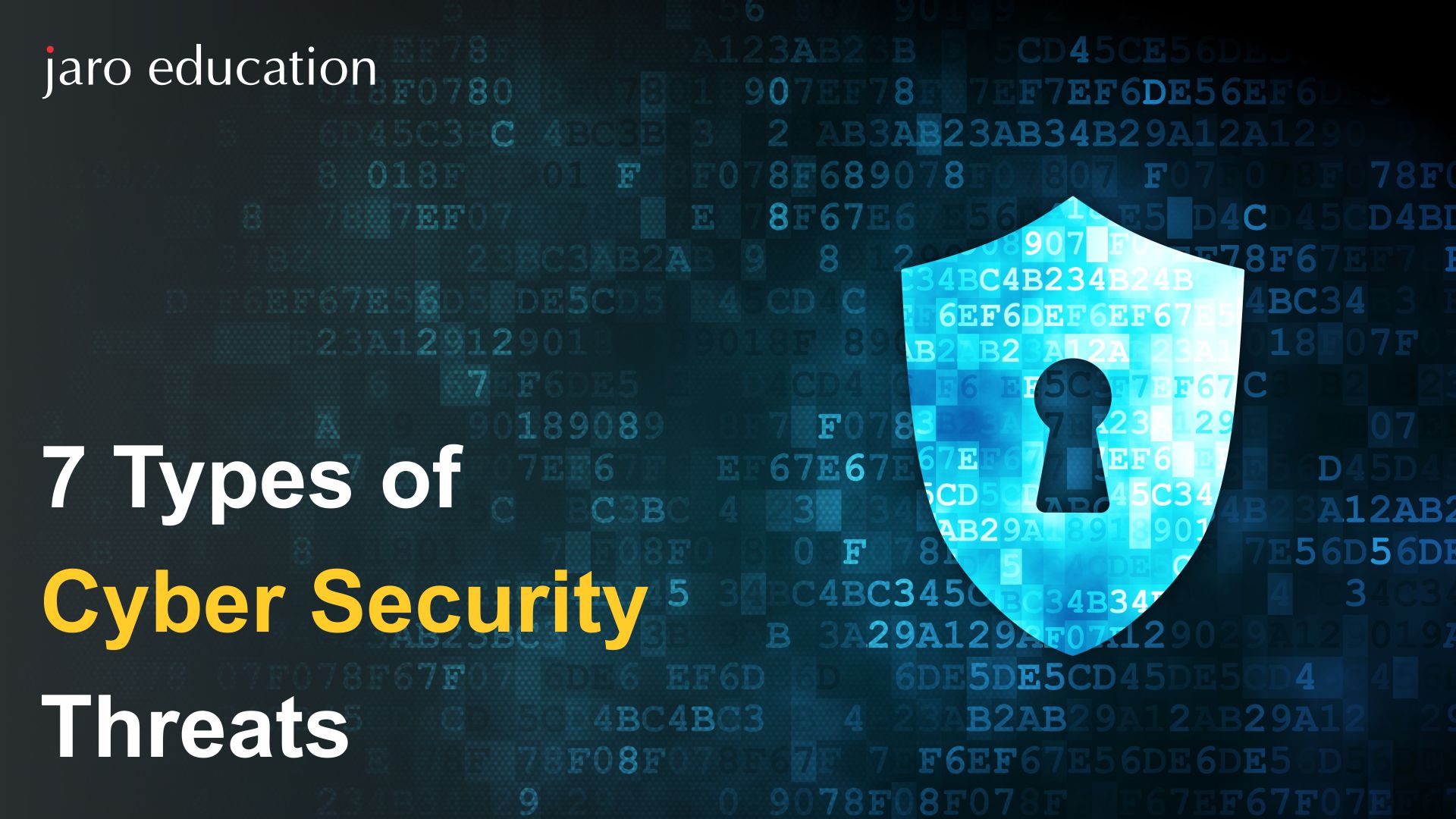Cyber attacks are surging exponentially in the post-pandemic world. Even the Gaming industry witnessed cyber attacks that spiked enormously. Major web applications and credentials stuffing attacks are easily conducted. Using the tactics of old-school phishing, hackers send gamers fraudulent messages encrypted amidst malware software.
Cybersecurity is a practice to save data, system attacks and prevent cybercrimes. Professionals can give your career a nudge in the growing field of Cyber Security. Unearth new age nuances of cybersecurity with IU International University of Applied Sciences Masters of Science (M.Sc.) in Cyber Security degree.
Let’s decode the most common threats in cybercrime and cybersecurity.
- Phishing
Phishing attacks and scams are on a rise. Mostly, a cyber attack like phishing is a type of social engineering attack which includes various strategies to steal users’ insights. It can include login credentials and credit card numbers. Accessing credentials has become an open avenue for attackers to steal anyone’s information.
Types of Phishing
- Clone phishing
- Domain spoofing
- Typosquatting
- SMS & Voice phishing
- Malware
Malware is a harmful file to a users’ system. Malicious programs like Trojan horses or spyware can cause stealing, encrypting or deleting of sensitive data. The Malware can also perform altering or hijacking core computing functions and monitoring users’ system activities.
Did you know that a New Android malware steals mobile banking data, money? Find how to identify. Earlier, Drinik Android malware managed to steal SMS information, but due to the prevalence of SMS declining and users shifting their focus to the internet.
In the era of digitalization, recently, the Drinik Android malware is spreading destruction as it updated software to meet the modern digital age. The Drinik Android malware creates a malfunction in the banking transaction screen by showcasing a false blank screen where if the user enters their details leads to leakage of sensitive information related to bank account, money, etc. Thus, accommodating data and bank details.
Type of Malware
- Cryptojacking
- Ransomware
- Polymorphic malware
- Remote Administration Tools
- Rootkits
- Emotet
The world’s most dangerous malware, Emotet, is disrupting global action in the modern age. Wondering what has made Emotet this dangerous? It is costly malware used to hire cybercriminals to install other types of malware, like in banking Trojans or ransomware directly onto a victim’s computer. Earlier in 2021, the law enforcement and judicial authorities worldwide have disrupted this significant botnet of the past decade.
The botnet in Emotet malware is polymorphic in nature, which means it changes the code each time it is called up. Thus allowing infection to go undetected. Trickbot, Qakbot and Ryuk were among the malware families to use Emotet by entering the machine.
- Denial of Service
In the most common of DoS attacks, the attacker uses a network of hijacked computers. Using a flood of target sites with phoney server requests, leaving no bandwidth for legitimate traffic. DoS reduces, restricts and prevents accessibility of system resources to its legitimate users.
In a DoS, attackers flood a user’s system with non-legitimate service requests or traffic to overload its resource. Thus, bringing the system down by leading to unavailability of the victim’s site or system.
DoS attacker’s goal is to gain access to the unauthorised network and corrupt the data and also prevent users from using its system. There are two types of DoS attacks namely Volume-based attacks and Protocol or network-layer attacks.
With 972,000 attacks, the first quarter of 2021, witnessed major attacks — nearly 3 million over the same period. This kind of attack can disrupt your organisation’s system and mitigate the disruption.
Quick Tip | To learn more about cyberattacks, join the world-class M.Sc. in Cyber Security from Germany’s leading university, IU International University of Applied Sciences.
- Man in the Middle (MitM)
A Man in the Middle (MitM) scenario includes the user, the attacker and the third party with whom the user is communicating. Cybercriminals generally impersonate the legitimate third party. This is done to allow a password attack like a phishing email. Herein, the email id or website seems to be authentic. The attacker effortlessly harvests the users’ credentials.
Prevention tips:
- Secure WiFi
- Follow the zero trust principle
- Monitor your network activities
- Use multi-factor authentication
- Employ DNS over HTTPS
- SQL Injection
The SQL injection allows an attacker to view web security vulnerabilities and interfere with their queries. This information attack includes the application of data belonging to the user. The attackers will easily modify, delete or even cause a ruckus in persistent changes in applications.
Types of SQL injections
- In-Band
- Error Based
- Union Based
- Out-of-band
- Inferential
- Boolean Based
- Time-Based
- The Password Attacks
Password Attacks are the most common cybercrimes and attacks conducted to breach personal or corporate data. It happens when an attacker hacks the password of the users.
Types of Password Attacks
- Brute-Force Attack
- Keylogger Attack
- Dictionary Attack
- Credential Stuffing
- Man-in-the-Middle
- Traffic Interception
- Phishing
- Moving Forward in Cyber Security
Learning important Cyber Security skills is essential like hacking, scripting, network, operating system, etc. Professionals aspiring for a solid career path in Cyber Security must have an in-depth understanding of the IT field, computer science and data.
To upskill in Cybersecurity, professionals must learn how to secure infrastructures against cyber-attacks, risks or malware using statistical and digital forensic methods. Pursue Masters of Science program in Cyber Security from Germany’s leading IU International University of Applied Sciences.
Discover your career fit with the new-age cybersecurity program.
Join our alumni network. Get expert insights on the Masters of Science program in Cyber Security straight to your inbox, and leverage a scalable career globally. Subscribe to our innovative blog.






